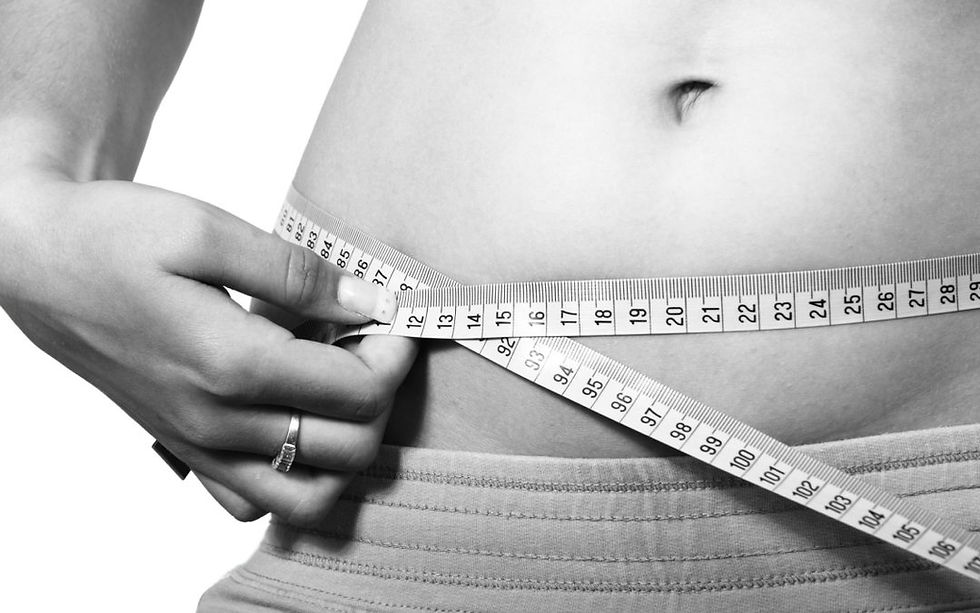Understanding Somatotypes: A Key to Body Acceptance and Eating Disorder Recovery
- L I T Wellness Solutions

- May 21
- 3 min read
Updated: Jun 3
In a world where body image is often distorted by unrealistic standards, understanding your body’s natural composition can be a powerful step toward healing. One such tool is the concept of somatotypes. This scientifically grounded way to classify body types can offer valuable insights into both physical and psychological health. It is especially useful in the context of eating disorders (EDs). Join us as we explore how you are more than a number and how understanding your somatotype can support eating disorder recovery and body acceptance.
What Are Somatotypes?
Somatotypes are classified through the Heath-Carter system into three primary types:
Endomorphs – Have higher fat mass and a rounder physique.
Mesomorphs – Exhibit a muscular and athletic build.
Ectomorphs – Feature a lean and linear frame.
These classifications provide more than just physical descriptors. They also reflect how individuals experience their bodies and how others perceive them. This is particularly relevant in the context of eating disorders, where body image and weight perception are often distorted.
Somatotypes and Eating Disorders: A Hidden Connection
Emerging research suggests that somatotypes may predict disordered eating attitudes (DEA), especially among younger populations. A study of young female ballet dancers found that mesomorphy and ectomorphy were strong predictors of DEA, achieving high accuracy scores (AUCs of 0.82 and 0.768, respectively). These findings imply that a better understanding of body type can help identify individuals at risk before symptoms escalate.
However, not all somatotypes receive equal attention in clinical settings. Heavier body types, such as endomorphs, are frequently underdiagnosed due to societal biases. This oversight can lead to delayed treatment and worsen outcomes, particularly for conditions like bulimia nervosa, where symptoms may present differently.
A New Dimension in Recovery
Recovery from an eating disorder is not a one-size-fits-all journey. It requires a multidimensional approach that encompasses physical, emotional, and social healing. Somatotypes play a crucial role in this recovery process by:
Improving body identity: A better understanding of one’s natural physique can enhance acceptance.
Addressing multisensory integration deficits: These deficits contribute to a distorted body image.
Guiding personalized nutrition and exercise plans: These plans should align with an individual’s unique physiology.
From Insight to Action: Using Somatotypes in Treatment
Clinicians are increasingly integrating somatotyping into personalized treatment strategies. Here are some examples of how different professionals can incorporate this approach:
Dietitians: They can use somatotype data to create nutrition plans that encourage healthy weight and energy balance.
Therapists: They can incorporate body type awareness into narrative therapy, helping clients rebuild a cohesive sense of self.
Exercise specialists: They can tailor physical activities to support recovery, transforming movement from a source of anxiety into one of empowerment.
This comprehensive strategy aligns with the latest guidelines from the American Psychiatric Association and the Academy of Nutrition and Dietetics. Both emphasize the importance of individualized, interdisciplinary care.
Limitations and the Road Ahead
While promising, somatotype-based approaches are still developing. More research is needed to understand their role in diverse populations and lesser-known eating disorders like ARFID (Avoidant/Restrictive Food Intake Disorder). Advancements in technology, such as 3D body scanning, may soon make somatotyping more precise and accessible.
Understanding Your Body for Better Recovery
Understanding your body is the first step toward healing your relationship with it. That’s why we’ve created a free guide: You Are More Than a Number: Understanding Somatotypes and Body Shape. This resource will help you:
✅ Identify your somatotype, body shape, and frame size
✅ Reflect on how it influences your body image
✅ Recognize the need for more conversation with a health care professional or your care team about personalized recovery strategies
👉 Connect to request a free download now and take the first step toward a more compassionate, informed approach to your body and recovery.
In conclusion, understanding your somatotype can be a transformative experience. It encourages compassion, enhances self-acceptance, and ultimately aids in eating disorder recovery. Embracing who you are at a biological level is a vital component in the journey towards healing.



Comments